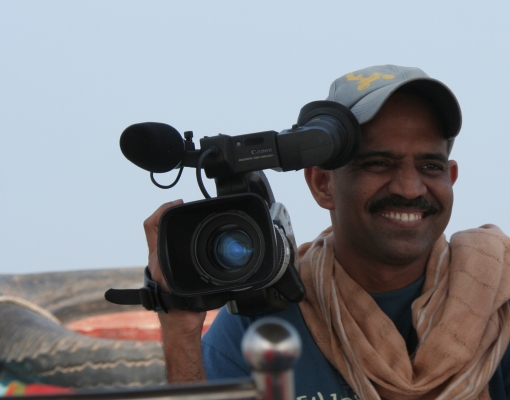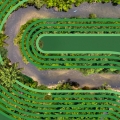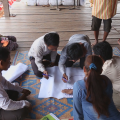“Freshwater in the Mekong Delta’s National Park: Now abundance and then shortage": A photo story
“Freshwater in the Mekong Delta’s National Park: Now abundance and then shortage," is a photo story by Hoài Chung Lê from Vietnam.
Photo 1: The Richest Region of Vietnam’s Mekong Delta
U Minh Thượng National Park (Kiên Giang province, Vietnam) is considered the "richest" region of the Mekong Delta in terms of biodiversity and is among the most ecologically important flooded forests in Southeast Asia. It includes a core zone (8,038 ha) in a rectangular shape and a buffer zone (13,000 ha with nearly 7,500 households). An enclosed dike system inside the core zone protects the water, while the buffer zone is divided by more than 20 canals for water security.

Photo 2: Life in the Buffer Zone
Due to the special area surrounded by forests and waterways, the households in the buffer zone of U Minh Thượng National Park make a living primarily by planting different crops for income. The canals grant people relatively equal access to water for irrigation but not for daily needs. The majority of the households managed to install pipes and pumps to get groundwater.

Photo 3: Wet Garden
A woman is harvesting "bồn bồn" plants (Typha angustifolia) in her family's "wet garden," one among several types of crops in the local gardens. She reminded herself of the past floods that "drowned" their plants and "released" the fish they raised. The households in the buffer zone still regard the water here as abundant, but in contrast, scientists have warned them about the inevitable shortage of freshwater.

Photo 4: Natural vs Artificial Contamination
Freshwater in the U Minh Thượng National Park region depends greatly on rainwater and other underground sources. Households cannot use the water from the canals for their daily use as the water is contaminated by natural and artificial chemicals and waste.

Photo 5: Now Abundance and then Shortage
For safety reasons, all the water pumped from the ground is left in containers for a few days before use to let the sediment and contaminants to settle down. There is a lack of infrastructure for providing clean water in the region. On the other hand, people and local authorities have no experience in dealing with the problem of freshwater shortage. Climate change risks include severe droughts, rising temperature, floods, and saltwater intrusion due to sea level rise.
This photo story was entered for the SUMERNET Young Professionals Photo Story competition on the theme of “Water Security for All.”
Info
This story is part of the following project
SUMERNET 4 All: Engaging with water insecurity in the Mekong Region
Topic
Country
Related people
You might be interested in
-
SUMERNET Vision Guide introducing the new phase "SUMERNET 4 All"
The new, revised "Vision Guide" for SUMERNET is now available. This vision guide presents an overview of SUMERNET - its origins and governance structure, background to the network, aims, key research areas, engagement with policy, and outreach products
![SUMERNET Vision Guide introducing the new phase "SUMERNET 4 All"]()
-
SUMERNET 4 All Call for Proposals on Joint Action
SUMERNET 4 All (S4A) provides financial support and technical assistance to consortia of researchers and boundary partners from the Mekong Region
![SUMERNET 4 All Call for Proposals on Joint Action]()
-
SUMERNET launches redesigned website to provide a fresh visual look and direction
SUMERNET is proud to announce the launch of our redesigned website to coincide with our new phase of work on addressing water insecurity in the Mekong Region.
![SUMERNET launches redesigned website to provide a fresh visual look and direction]()









 Read more about SUMERNET
Read more about SUMERNET
